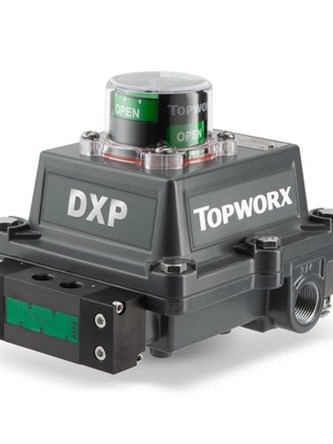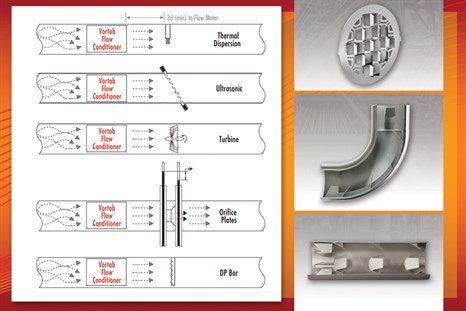New in gas technology
Elliott Group offers a new cryogenic expander
 |
Elliott Group released an impulse-type, two-phase cryogenic expander that enables the expansion of liquefied gases into two-phase mixtures. Harnessing the energy of two-phase expansion increases the expander’s generator output, reduces boil-off losses and improves the overall liquefaction and cooling processes. Each expander is custom-designed and built for use in liquefied natural gas (LNG) liquefaction, refrigeration and separation processes.
This technology optimizes staging to minimize axial load at the radial ball bearings. Due to its ability to tolerate a high content of vapor mass, it is offered for liquefaction and refrigeration processes with relatively high vaporization capability in cryogenic hydrocarbon applications.
The isentropic efficiency of these units is estimated to be at around 60%–70%, depending on the mass flow rate and unit pressure drop. They do not require a Joule Thomson valve downstream and have generator nameplate ratings ranging from 0.3 MW–2.2 MW for a single unit. If the process requires high-flow output, these units can be installed and operated in a parallel configuration.
The new cryogenic expander also features an axial flow impulse design with reduced overhung and stage reaction, a vertically suspended upward flow configuration, a single-shaft compact design with a submerged generator and cooling and balance lines to adjust pressure and flow to cool the submerged generator and lubricate the ball bearings efficiently. Additionally, it can be retrofitted to existing LNG liquefaction and cooling applications.
The impulse-type, two-phase cryogenic expander improves the efficiency of the liquefaction process with an estimated LNG production gain of 5%–7% by reducing boil-off.
The Vortab Company releases flow conditioners to tame irregular fluid flows
 |
In crowded process plants, less than ideal straight pipe runs often result in swirling fluid flows and asymmetrical velocity profile distortions that affect the efficient, continuous operation of equipment, such as gas compressors, valves and pumps and the accuracy of sensitive instruments, such as flow meters. Vortab’s flow conditioner aims to control this issue.
For example, such disturbed flow conditions can easily reduce the efficiency of natural gas compressors, which also potentially increases maintenance and the total cost of operating gas pipelines. Gas with swirling or asymmetric velocity flow profiles can result as gas is routed through compressor stations on long, complex pipelines and into storage facilities due to shortages of real estate, crowded equipment conditions, and the use of pipe elbows or valves and variable pipeline demand.
There are several types of critical equipment, including gas compressors, pumps, valves and flow instrumentation, which require relatively long lengths of pipe straight-run for high-efficiency operation. It can take up to 40 pipe diameters of unobstructed straight pipe run to eliminate swirl and velocity profile distortions. Vortab flow and process conditioners isolate such flow disturbances and create a swirl-free, symmetrical and repeatable velocity flow profile in just a few pipe diameters to keep equipment running efficiently.
Vortab’s product line of inline and insertion type flow conditioners nearly eliminates the upstream straight pipe run requirements for many types of equipment and instruments. They condition the flow stream into a regular flow regime to mimic adequate pipe straight run.
In addition to conditioning the flow stream, using a flow conditioner eliminates the pipe cost and technician labor for purchasing additional lengths of pipe straight run and the labor for its installation. Many times, however, sufficient plant real estate is not available to accommodate the required pipe straight-run and then flow conditioning is the best option.
Vortab Flow Conditioners feature tab-type flow conditioning technology, which has been laboratory proven and successfully installed in hundreds of plants worldwide. They have been tested with swirl and velocity profile distortion generators in state-of-the-art gas and liquid calibration facilities to validate its unique flow conditioning design.
In long straight pipe lengths, swirl reduction and velocity profile correction occur naturally due to diffusion and turbulent mixing. With its anti-swirl and inclined vortex generating profile correction tabs projecting from the inside pipe surface, Vortab Flow Conditioners generate vortices that accelerate these natural pipe effects to create a uniform, non-swirling, symmetrical flow profile in a much shorter section of pipe.
Vortab flow conditioners can be made from carbon steel, 316L stainless steel or Hastelloy C-276. Various process connections are available such as ANSI flanges, male NPT threads, butt welded preps or retaining wafers. Custom configurations are also available from the factory.
Hyliion and Cummins collaborate on natural gas Hypertruck ERX powertrain
Hyliion and Cummins are joining forces to optimize the Cummins natural gas engine as the generator for the Hypertruck ERX powertrain.
Together the companies plan to obtain key environmental certifications for Cummins’ natural gas internal combustion engines to be used in Hyliion’s Hypertruck ERX powertrain. The Hyliion Hypertruck ERX is an electric range extender semi-truck powertrain solution using onboard power generation to recharge the batteries.
The Hyliion Hypertruck ERX offers 75 mi of electric range to qualify for credits under CARB’s upcoming ZEV mandates and can achieve up to 1,000 mi of full range through the generator, significantly reducing range anxiety. Cummins’ ISX12N will be optimized with the Hyliion Hypertruck ERX to use the existing 700 natural gas stations across North America for low-cost refueling.
The start of production for the Hypertruck ERX with the ISX12N Cummins natural gas power is anticipated to begin in late 2023.
Dräger’s X-Viz system optimizes safety and efficiency in confined space operations
 |
To meet the need for optimized safety and efficiency in confined spaces and remote hazardous locations, Dräger launched the new X-Viz confined space monitoring system, the latest product in its rental and safety services portfolio.
The X-Viz is designed to meet OSHA requirements during plant turnarounds as a complete safety monitoring system. By integrating gas detection, video monitoring, alarms and access control technologies, X-Viz allows fewer safety attendants to monitor more confined spaces remotely. It also reduces overall labor costs and delegates safety supervision to skilled specialists. The high-quality, real-time video footage allows safety professionals to increase the level of safety at a reduced cost.
The gas detection units have LEL, O2, H2S, and CO monitors and a strong sampling pump. Drawing samples from a hazardous atmosphere with the gas detection unit is simple, seamless and safe. The gas detection units can measure up to 6 gasses simultaneously and up to 120 hr of continuous operation.
One of the most integral parts of the system is the delivery of the video content. High-definition cameras are strategically placed to watch over work crews, especially in areas where direct supervision is limited or obscured physically. The cameras function 24 hr/d to provide maximum visibility. Dräger’s proprietary integrated software system supports data recording and analysis, triggering automatic alarms when necessary.
Tennessee Gas Pipeline receives FERC approval for producer-certified gas pooling service proposal
Tennessee Gas Pipeline Company received approval for its producer-certified gas (PCG), or responsibly sourced gas, aggregation pooling service from the Federal Energy Regulatory Commission (FERC). The PCG aggregation pooling service is available at all pooling points across the Tennessee Gas Pipeline (TGP) system. PCG is conventional natural gas sourced from production facilities certified by a qualified third party to meet specific environmental, social and governance standards that typically focus on management practices for methane emissions, water usage and community relations. The service is designed to enable shippers on TGP to purchase and sell PCG supply at non-physical pooling locations, ultimately serving end-users, utilities, power plants and LNG facilities connected to the TGP system.
Parties who have obtained certifications from qualified third-party organizations are supplying the PCG needed for the pooling service, and the supply is expected to grow as PCG becomes the fuel of choice among customers. TGP plans to continue working with producers and customers to refine this service as regulations and markets evolve.
Emerson’s emergency shutdown discrete valve controller improves safety, uptime in hazardous applications
Emerson introduced the TopWorx DX PST with HART 7. Units provide valuable valve data and diagnostic information, enabling the digital transformation of process applications. The new DX PST integrates seamlessly with existing valves and control systems, giving operators access to critical valve data, trends and diagnostics that can be used to predict and schedule maintenance.
The DX PST’s partial stroke test ensures the system’s reliable function without shutting down the process. A safety feature that confirms the valve will fully close and stop the process if an emergency is detected, and the test is activated by simply pressing the local PST button — no additional equipment is required. The unit will override testing to perform an emergency shutdown to prevent critical failure in upset conditions.
Certified for operation in harsh and hazardous applications, the adaptive DX PST is designed to ensure the integrity of valves, improving overall safety and facility uptime in oil and gas, refinery, chemical, industrial energy and mining applications.
The HART protocol, the specifications of which the FieldComm Group owns, builds another layer of information that ensures data, trends and diagnostics are monitored and tied into the Industrial Internet of Things. This information can be used to predict and schedule maintenance effectively. GP




Comments